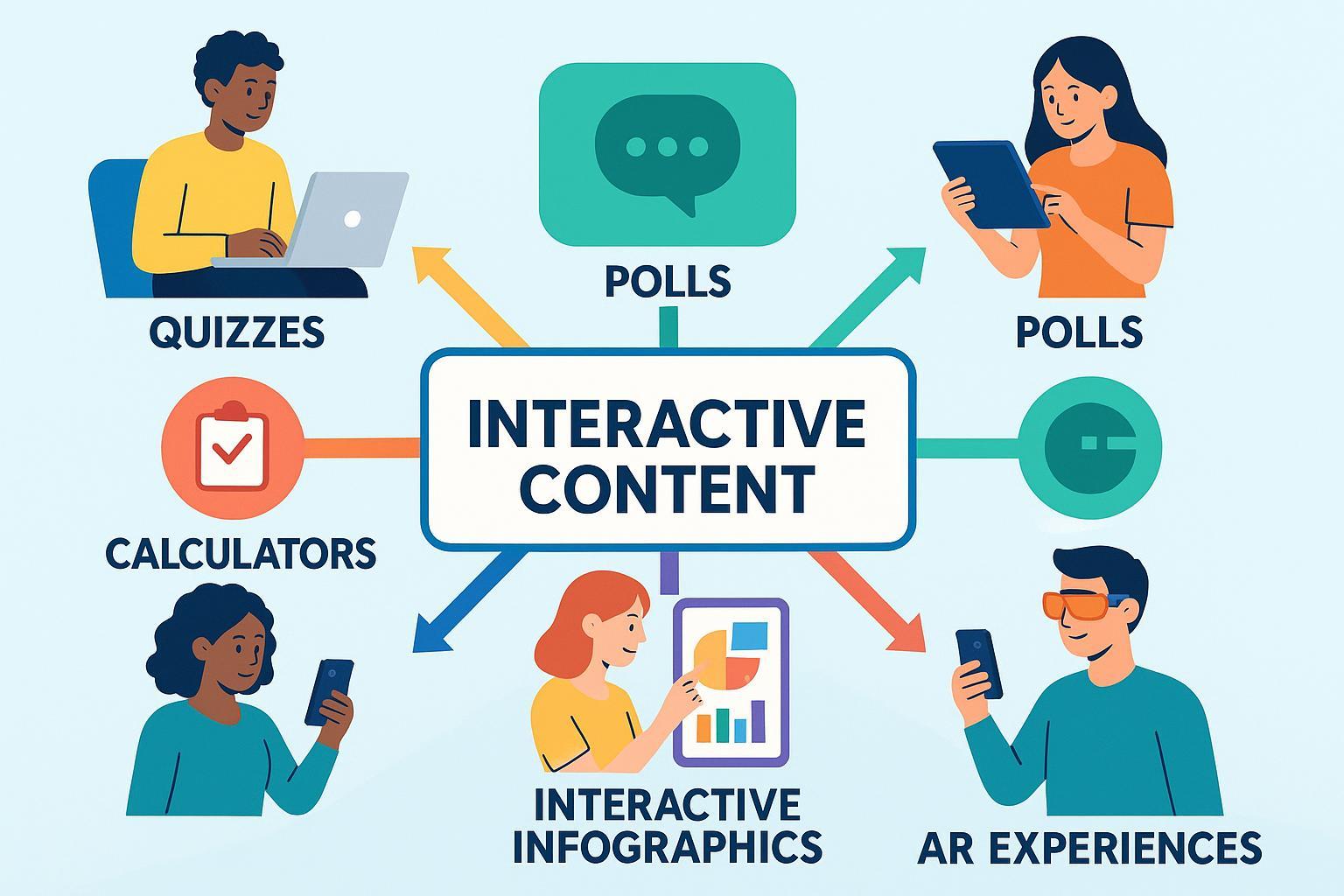What is Interactive Content? Definition, Types & Examples
Discover the definition of interactive content, explore core types, top examples, and how it boosts digital marketing engagement.


Interactive content is any digital material that invites users to actively participate—by clicking, inputting, making choices, or responding—creating a two-way dialogue between brands and audiences.
In-Depth Explanation
Unlike static content (such as plain articles, images, or videos), interactive content requires and rewards user engagement, fostering personalized experiences and sustained attention. Each user’s action influences the content outcome—turning content from something passively consumed into an engaging experience. Personalization further adapts experiences to individual users, but interactive content’s core is reciprocal activity.
According to Outgrow’s blog, “Interactive content is any form of digital content that calls for more than passive consumption by users—it invites activity via clicks, inputs, decisions, or responses, enabling a two-way dialogue between brand and audience.”
Key Types and Components
Type | Features & Description | Key Use Cases |
|---|---|---|
Quizzes & Assessments | Guide users through Q&A, provide tailored feedback | Product finders, learning checks |
Polls & Surveys | Collect opinions or preferences, display instant results | Customer research, sentiment |
Calculators | Let users input data for instant, tailored outputs | ROI calculators, budget planners |
Interactive Infographics | Visually present data, clickable elements reveal more info | Shareable reports, impact visuals |
Interactive Videos & Tours | Playable or explorable visuals, choose-your-path stories | Virtual events, product demos |
Games & AR Experiences | Gamified content or augmented reality enrichment | Promotions, interactive try-ons |
Technical features: Seamless navigation, mobile responsiveness, real-time feedback, and data capture integration are essential. Accessibility and inclusivity must be prioritized for broader reach.
Real-World Applications
B2B: SaaS companies use ROI calculators and interactive whitepapers to educate and qualify leads.
B2C/Retail: Beauty brands (like Sephora) offer AR makeup try-on tools; fashion sites employ quizzes to guide product selection.
Service/Nonprofit: Charities deploy interactive impact infographics or donation calculators; service businesses might utilize feedback wizards or onboarding walkthroughs.
Events/Education: Virtual 360° tours, interactive agendas, and knowledge assessments drive event engagement and learning retention.
Best practices: Align content type with campaign and audience goals, perform user testing, optimize for mobile usage, and implement analytics for measuring engagement and ROI.
Related Concepts
Static Content: Traditional material (e.g., blog posts, images) that is consumed without feedback from the audience.
Personalized Content: Content tailored to individual user data; often overlaps with but isn’t always interactive.
Gamification: Incorporating game elements (points, rewards) to boost motivation and engagement.
User Engagement Metrics: Quantitative measures (dwell time, interactions, conversion rates) evaluating content effectiveness.
For further detail, see Storyly’s comprehensive interactive content glossary.
Summary Table: Static vs. Interactive vs. Personalized Content
Static | Interactive | Personalized | |
|---|---|---|---|
User Role | Passive | Active | Recipient |
Feedback Loop | None | Two-way | One/two-way |
Adaptivity | Fixed | Dynamic | Based on user |
Best For | Info delivery | Engagement, data | Loyalty, relevance |
Interactive content elevates marketing from informing to engaging, making every contact an opportunity for participation and conversion.





